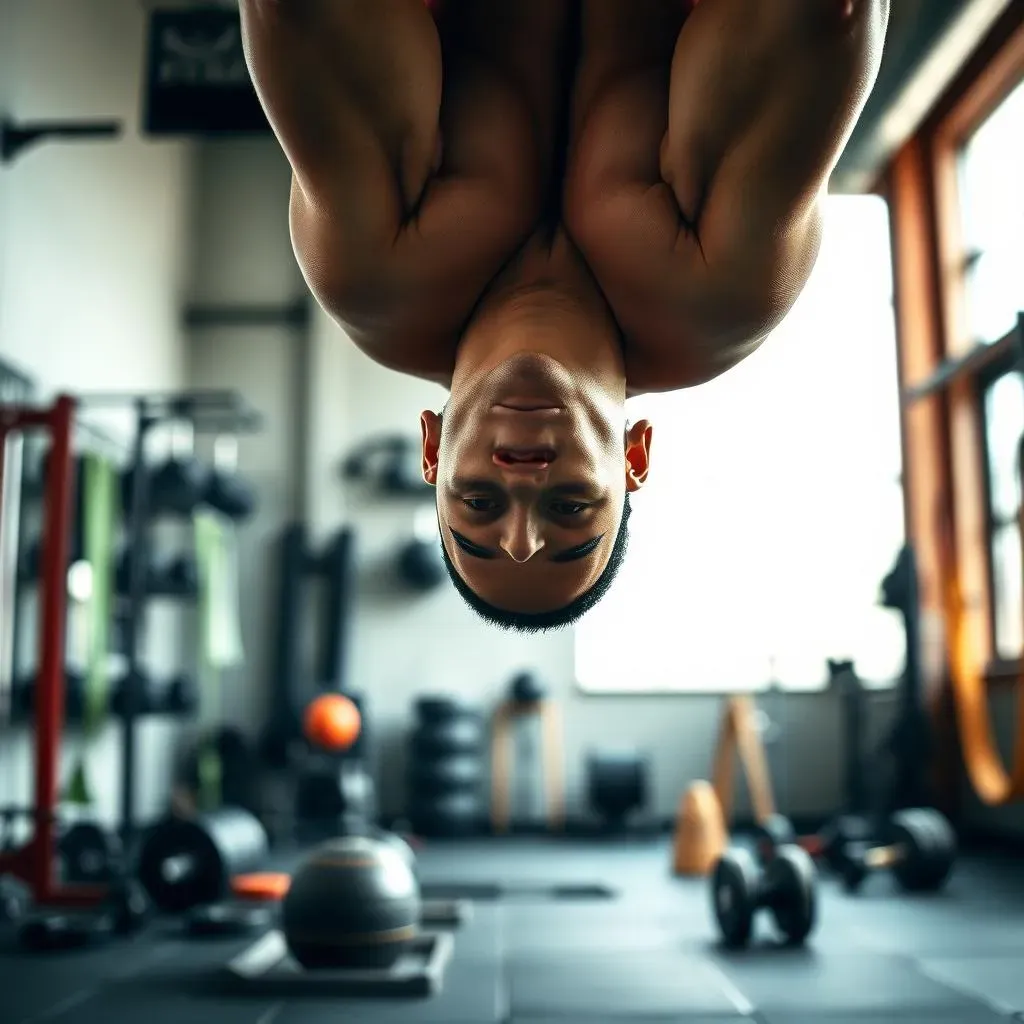Table of Contents
Are you ready to take your calisthenics skills to new heights? Mastering the planche is an impressive feat that requires dedication, patience, and the right training approach. For those seeking to learn how to planche calisthenics, the journey can be daunting, but with the correct guidance, anyone can achieve this advanced bodyweight skill. In this comprehensive guide, we will delve into the world of planche calisthenics, exploring the challenges, progressions, and effective methods for mastering how to planche calisthenics. From understanding the impact of body proportions to leveraging resistance bands and dynamic repetitions, we will cover it all. Whether you're a beginner or an experienced practitioner, this article will provide you with the tools and knowledge necessary to overcome obstacles and successfully learn how to planche calisthenics. So, let's embark on this journey together and discover the secrets to achieving the perfect planche.
Understanding the Challenges of How to Planche Calisthenics

Understanding the Challenges of How to Planche Calisthenics
Embarking on the journey to learn how to planche calisthenics can be both exhilarating and intimidating. The planche is an advanced calisthenics skill that requires a great deal of strength, control, and technique. However, several factors can affect the difficulty of mastering the planche, making it challenging for some individuals to progress. One of the primary challenges is body proportions. For instance, individuals with shorter arms or a heavier lower body may find it more difficult to achieve the planche due to the increased strain on their wrists and shoulders.
Another significant challenge is the lack of step-by-step progressions. Many calisthenics practitioners attempt to jump straight into advanced techniques without building a solid foundation. This can lead to plateaus, injuries, and frustration. Creating intermediate steps, such as one-legged variations, can help bridge the gap between beginner and advanced levels, making the learning process more manageable and reducing the risk of injury.
Body Proportion | Effect on Planche | Modification |
|---|---|---|
Short Arms | Increased strain on wrists and shoulders | Focus on building wrist and shoulder strength |
Heavy Lower Body | Difficulty in achieving balance | Engage in exercises that strengthen the core and improve overall balance |
- Start with shorter progressions to build strength and confidence
- Incorporate wrist and shoulder strengthening exercises into your routine
- Focus on core strength to improve balance and stability
It's essential to recognize that everyone's journey to mastering the planche is unique, and what works for one person may not work for another. By understanding the challenges and implementing personalized training strategies, individuals can overcome obstacles and make steady progress toward achieving the planche. With dedication and the right approach, anyone can learn how to planche calisthenics and enjoy the many benefits this skill has to offer.
Progressing to Planche: Intermediate Steps for How to Planche Calisthenics Success
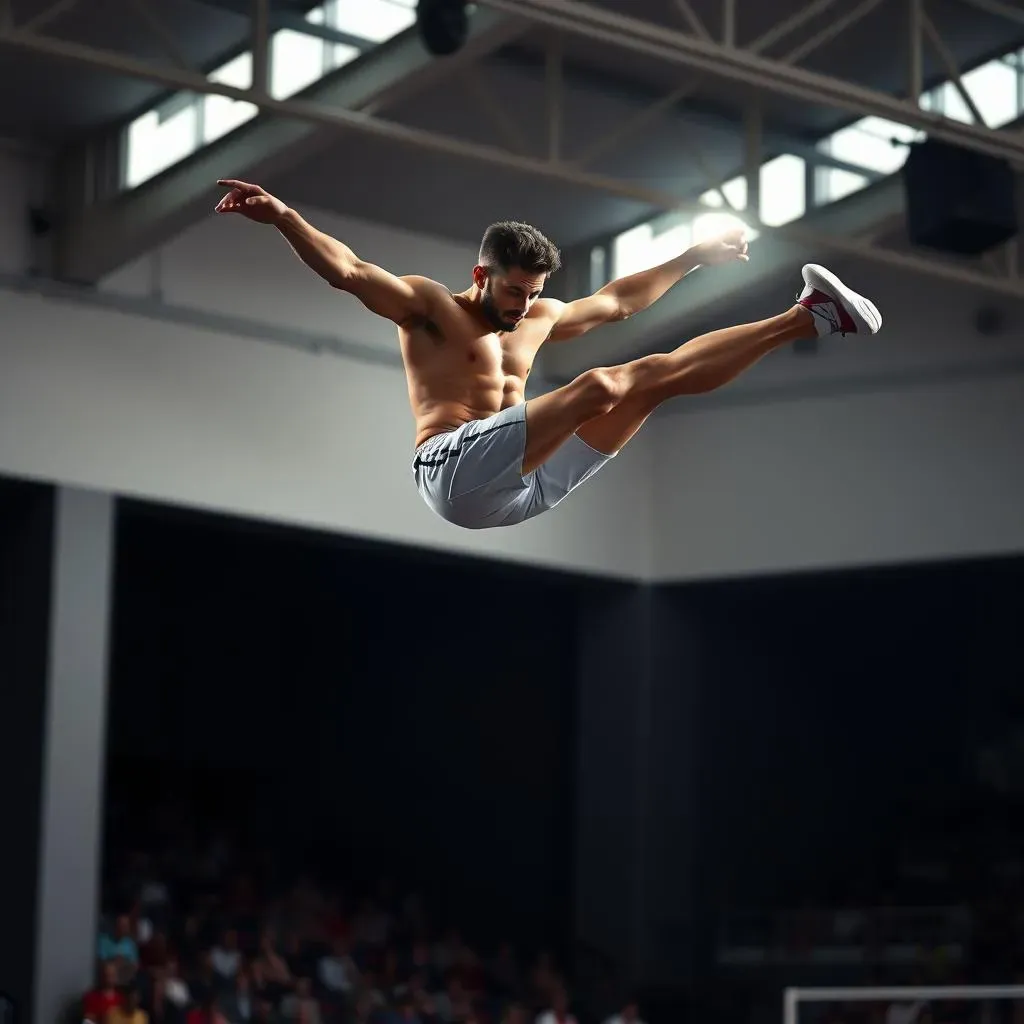
Progressing to Planche: Intermediate Steps for How to Planche Calisthenics Success
One of the most critical aspects of learning how to planche calisthenics is progressing through intermediate steps. Many practitioners attempt to jump directly from the tuck planche to the full planche, but this can lead to frustration and injury. To bridge this gap, it's essential to incorporate intermediate steps into your training regimen. One effective method is the Open Half Lay Planche, a progression that helps build the strength and control needed for the full planche.
The Open Half Lay Planche involves laying on your back with your arms extended overhead and your legs lifted, creating a straight line from head to heels. This position helps strengthen your core and improves your ability to engage the necessary muscles for the planche. By mastering this progression, you'll be better equipped to handle the demands of the full planche.
Progression | Description | Benefits |
|---|---|---|
Tuck Planche | Starting position with knees tucked to chest | Builds foundational strength and control |
Open Half Lay Planche | Laying on back with arms extended and legs lifted | Strengthens core and improves muscle engagement |
Straddle Planche | Advanced position with legs extended and body in a straight line | Develops full range of motion and planche technique |
- Start with shorter progressions to build strength and confidence
- Incorporate core-strengthening exercises into your routine
- Focus on proper technique and control throughout each progression
Another intermediate step is the one-legged tuck planche. This variation involves lifting one leg while maintaining the tuck planche position, which helps improve balance and stability. By alternating legs and gradually increasing the duration, you'll build the strength and control necessary for the full planche.
It's also essential to incorporate dynamic planche repetitions into your training. Exercises like the Tuck Press Planche, where you press up from a tuck planche to a full planche, can help build excess strength and prepare your muscles for the demands of the planche.
Revolutionizing Your Workout: Resistance Bands for Easier Planche Calisthenics
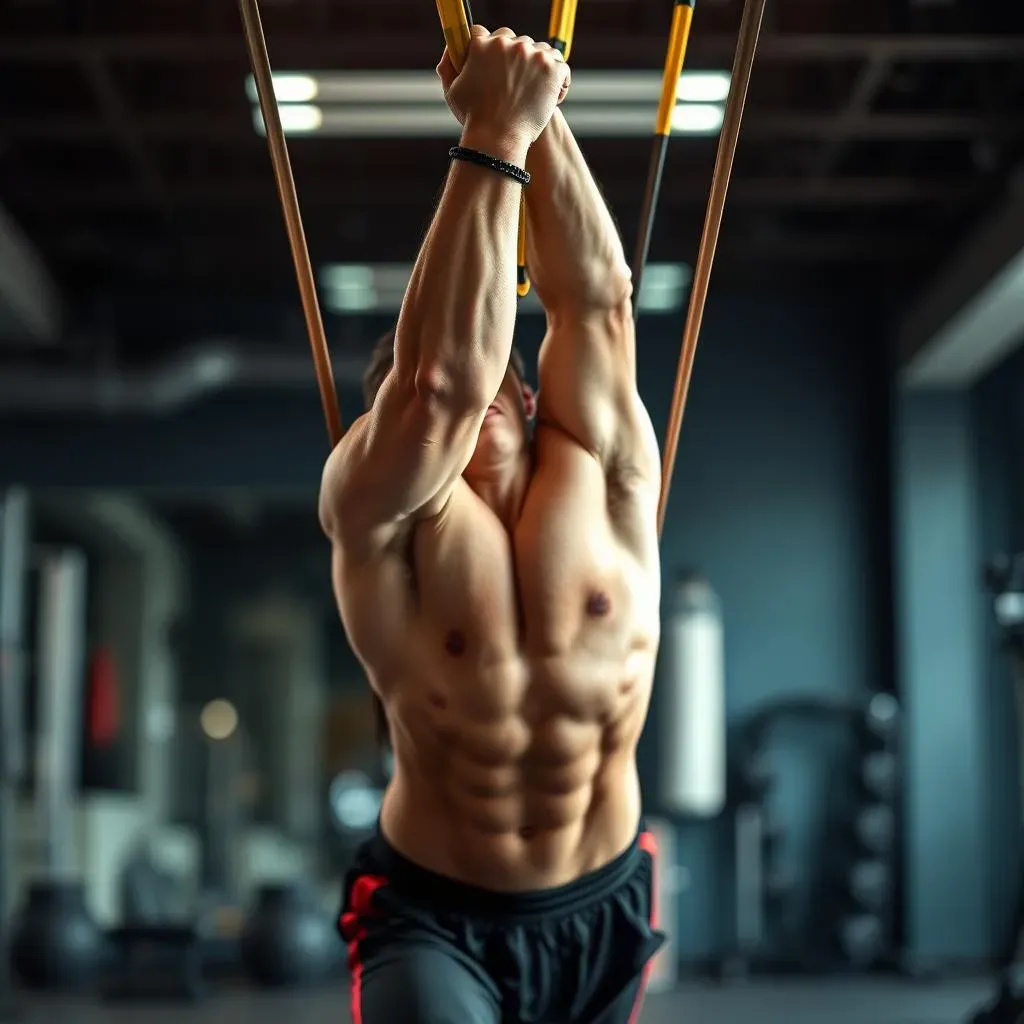
Revolutionizing Your Workout: Resistance Bands for Easier Planche Calisthenics
Introduction to Resistance Bands
Resistance bands are a valuable tool for calisthenics practitioners, especially when it comes to learning the planche. These bands provide a level of assistance that can help reduce the intensity of planche progressions, making them more accessible to individuals who are still building their strength and control.
By incorporating resistance bands into your planche training, you can gradually increase the difficulty of your workouts as you build strength. This not only helps prevent plateaus but also reduces the risk of injury by allowing your muscles to adapt to the demands of the planche.
Resistance Band Benefits | Description | Advantages |
|---|---|---|
Assistance | Provides support and reduces intensity | Helps build confidence and strength |
Versatility | Can be used with various progressions | Allows for gradual increase in difficulty |
Portability | Lightweight and easy to carry | Enables training anywhere |
- Start with lighter resistance and gradually increase as strength improves
- Use resistance bands with various progressions, such as the tuck planche and straddle planche
- Focus on proper technique and control when using resistance bands
Training with Resistance Bands
When using resistance bands for planche training, it's essential to focus on proper technique and control. Start by anchoring the band to a stable object and looping the other end around your waist or legs. Adjust the tension to a level that provides the right amount of assistance for your current progression.
As you become more comfortable with the resistance band, you can gradually reduce the tension to increase the difficulty of your workouts. This will help you build the strength and control needed to progress to more advanced planche techniques.
Progression | Resistance Band Setup | Benefits |
|---|---|---|
Tuck Planche | Anchor band to stable object, loop around waist | Reduces strain on wrists and shoulders |
Straddle Planche | Anchor band to stable object, loop around legs | Assists in maintaining balance and control |
- Start with lower resistance and gradually increase as you build strength
- Focus on proper technique and control throughout each progression
- Use resistance bands in conjunction with other training methods for optimal results
Maximizing Results with Resistance Bands
To get the most out of your resistance band training, it's essential to combine it with other effective methods. Dynamic planche repetitions, such as the Tuck Press Planche, can help build excess strength and prepare your muscles for the demands of the planche.
Additionally, incorporating core-strengthening exercises, like the Assisted Maltese Press, will help improve your overall stability and control. By combining these methods with resistance band training, you'll be well on your way to mastering the planche.
Training Method | Description | Benefits |
|---|---|---|
Dynamic Repetitions | Exercises like Tuck Press Planche | Builds excess strength and prepares muscles |
Core Strengthening | Exercises like Assisted Maltese Press | Improves stability and control |
- Incorporate dynamic repetitions into your resistance band workouts
- Focus on core strengthening exercises to improve overall stability
- Combine resistance band training with other methods for optimal results
Dynamic Planche Repetitions: Building Strength with How to Planche Calisthenics Exercises
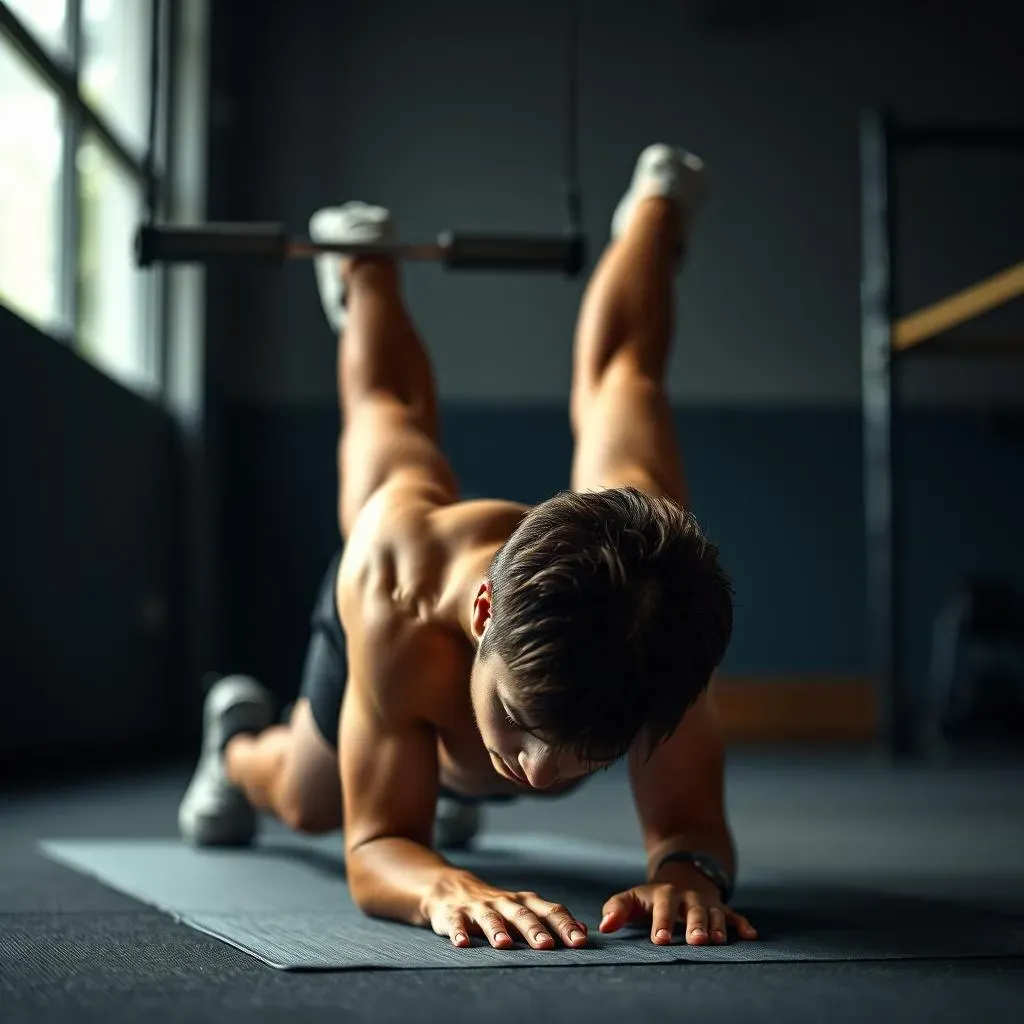
Dynamic Planche Repetitions: Building Strength with How to Planche Calisthenics Exercises
Introduction to Dynamic Planche Repetitions
Dynamic planche repetitions are a crucial component of any planche training regimen. These exercises involve moving through the planche position in a dynamic manner, which helps build the strength and control needed to master the planche. By incorporating dynamic repetitions into your workout, you'll be able to develop the excess strength required to overcome the challenges of the planche.
One of the most effective dynamic planche repetitions is the Tuck Press Planche. This exercise involves starting in a tuck planche position and then pressing up to a full planche, holding for a brief moment before returning to the tuck planche. By repeating this motion, you'll build the strength and endurance needed to maintain the planche position.
Exercise | Description | Benefits |
|---|---|---|
Tuck Press Planche | Press up from tuck planche to full planche | Builds excess strength and endurance |
Straddle Press Planche | Press up from straddle planche to full planche | Improves control and stability |
- Start with lower repetitions and gradually increase as strength improves
- Focus on proper technique and control throughout each repetition
- Incorporate variations, such as the Tuck Press Planche, to target different muscle groups
Advanced Dynamic Planche Repetitions
As you progress in your planche training, it's essential to incorporate more advanced dynamic repetitions into your regimen. The Straddle Press Planche is an excellent exercise for building control and stability. This involves starting in a straddle planche position and pressing up to a full planche, holding for a moment before returning to the straddle planche.
Another effective exercise is the Planche Push-Up. This involves starting in a full planche position and performing a push-up, lowering your body until your chest nearly touches the ground before pressing back up to the planche position. This exercise helps build the strength and endurance needed to maintain the planche for extended periods.
Exercise | Description | Benefits |
|---|---|---|
Planche Push-Up | Perform a push-up from the full planche position | Builds endurance and strength |
Planche Hold | Hold the full planche position for extended periods | Improves control and stability |
- Incorporate advanced exercises, such as the Planche Push-Up, into your routine
- Focus on proper technique and control throughout each repetition
- Gradually increase the duration of planche holds to improve endurance
Maximizing Results with Dynamic Planche Repetitions
To maximize the effectiveness of dynamic planche repetitions, it's essential to combine them with other training methods. Resistance band training, for example, can provide assistance and help reduce the intensity of planche progressions. By incorporating resistance bands into your dynamic repetition workouts, you'll be able to build strength and control more efficiently.
Additionally, core-strengthening exercises, such as the Assisted Maltese Press, are crucial for improving stability and control. By combining dynamic planche repetitions with core strengthening exercises, you'll be well on your way to mastering the planche.
Training Method | Description | Benefits |
|---|---|---|
Resistance Band Training | Provides assistance and reduces intensity | Helps build strength and control |
Core Strengthening | Exercises like Assisted Maltese Press | Improves stability and control |
- Combine dynamic repetitions with resistance band training for optimal results
- Incorporate core-strengthening exercises into your routine
- Focus on proper technique and control throughout each repetition
Core Strength for Planche: Essential Exercises for How to Planche Calisthenics Mastery
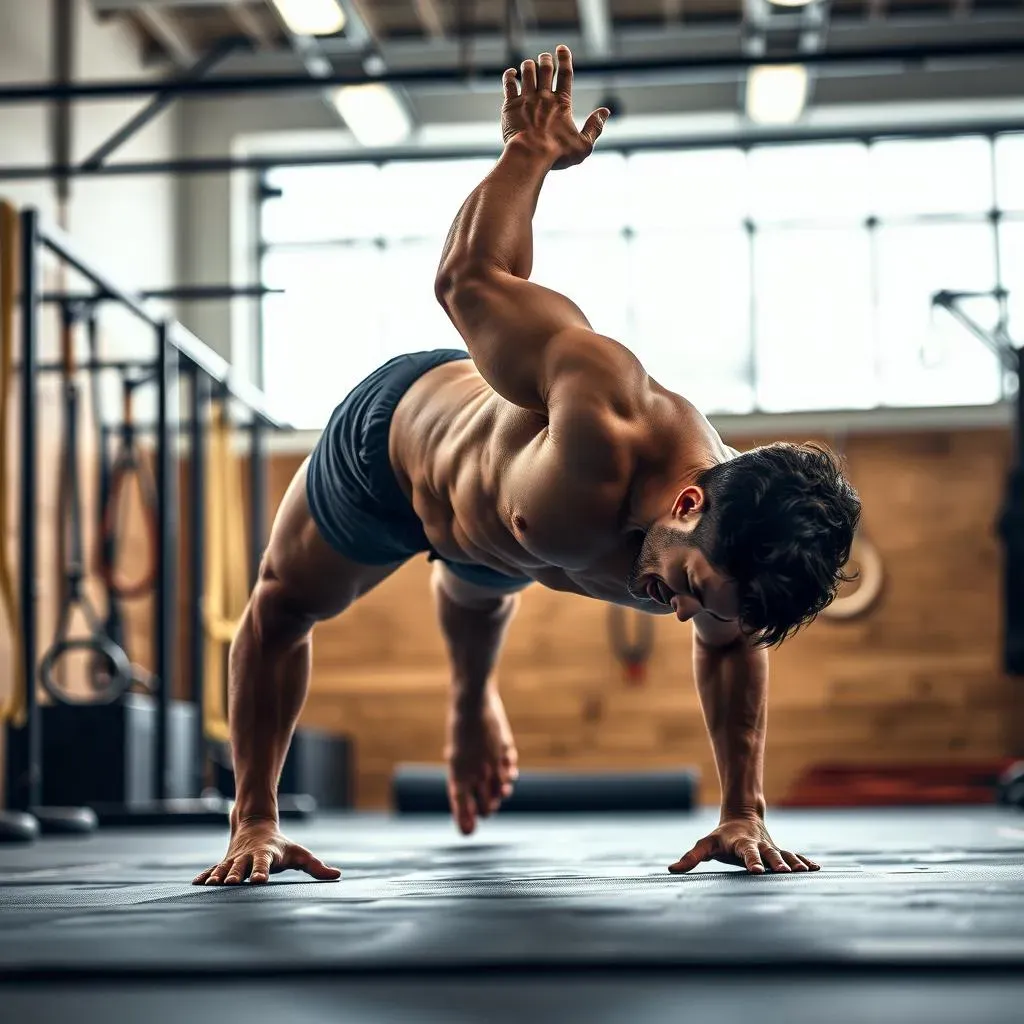
Core Strength for Planche: Essential Exercises for How to Planche Calisthenics Mastery
Introduction to Core Strength for Planche
Core strength is essential for mastering the planche, as it provides the stability and control needed to maintain the position. A strong core enables you to engage the necessary muscles, ensuring proper technique and reducing the risk of injury. Without a solid core, even the most advanced calisthenics practitioners can struggle to achieve the planche.
One of the most effective core-strengthening exercises for planche training is the Assisted Maltese Press. This exercise involves lying on your back with your arms extended overhead and lifting your legs straight up towards the ceiling. As you lift, press your arms downwards, engaging your core muscles to support the movement.
Exercise | Description | Benefits |
|---|---|---|
Assisted Maltese Press | Lie on back, extend arms, lift legs, and press arms downwards | Strengthens core and improves control |
Plank | Hold a position with hands under shoulders and toes on ground | Improves overall core stability |
- Start with shorter holds and gradually increase duration as strength improves
- Incorporate variations, such as the side plank, to target different muscle groups
- Focus on proper technique and engagement of core muscles
Advanced Core Strengthening Exercises
As you progress in your planche training, it's essential to incorporate more advanced core-strengthening exercises into your regimen. The Dragon Flag is an excellent exercise for building the strength and control needed for the planche. This involves lying on your back with your arms extended overhead and lifting your entire body, except for your shoulders, off the ground.
Another effective exercise is the Human Flag. This involves holding a position with your body parallel to the ground, engaging your core muscles to maintain control and stability.
Exercise | Description | Benefits |
|---|---|---|
Dragon Flag | Lie on back, lift entire body except shoulders | Builds advanced core strength and control |
Human Flag | Hold body parallel to ground, engaging core muscles | Improves overall core stability and control |
- Incorporate advanced exercises, such as the Dragon Flag, into your routine
- Focus on proper technique and engagement of core muscles
- Gradually increase the duration and difficulty of exercises as strength improves
Maximizing Core Strength for Planche Mastery
To maximize the effectiveness of your core-strengthening exercises, it's essential to combine them with other training methods. Dynamic planche repetitions, such as the Tuck Press Planche, can help build excess strength and prepare your muscles for the demands of the planche.
Additionally, incorporating resistance band training into your core-strengthening regimen can provide assistance and help reduce the intensity of planche progressions. By combining these methods, you'll be well on your way to mastering the planche.
Training Method | Description | Benefits |
|---|---|---|
Resistance Band Training | Provides assistance and reduces intensity | Helps build strength and control |
Dynamic Repetitions | Exercises like Tuck Press Planche | Builds excess strength and prepares muscles |
- Combine core strengthening with resistance band training for optimal results
- Incorporate dynamic repetitions into your routine
- Focus on proper technique and control throughout each exercise
Conclusion: Mastering the Planche with How to Planche Calisthenics Techniques
Mastering the planche is a remarkable achievement that not only showcases your strength and flexibility but also demonstrates your commitment to calisthenics training. By understanding the challenges associated with how to planche calisthenics, incorporating intermediate steps, utilizing resistance bands, and focusing on dynamic repetitions and core strength, you'll be well on your way to successfully learning how to planche calisthenics. Remember, consistency and patience are key. Don't be discouraged by setbacks, and celebrate each small victory along the way. With persistence and the right guidance from resources like calisthenicsfrance.com, you'll be performing a flawless planche in no time. So, keep pushing your limits, and soon you'll be inspiring others with your impressive calisthenics skills.
